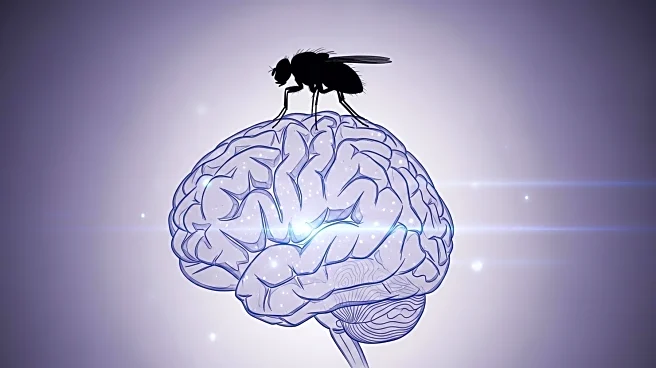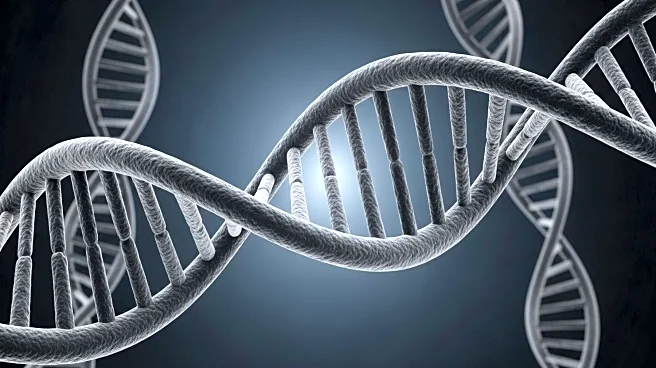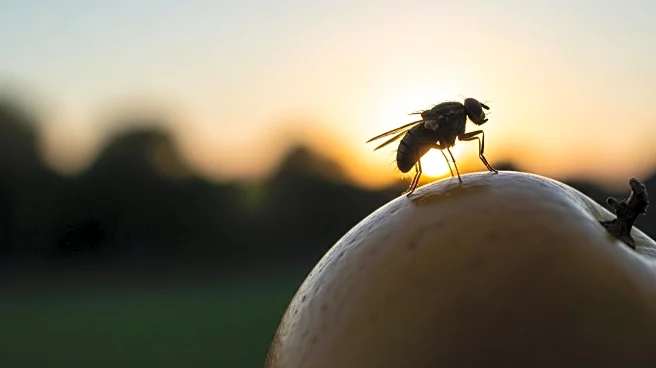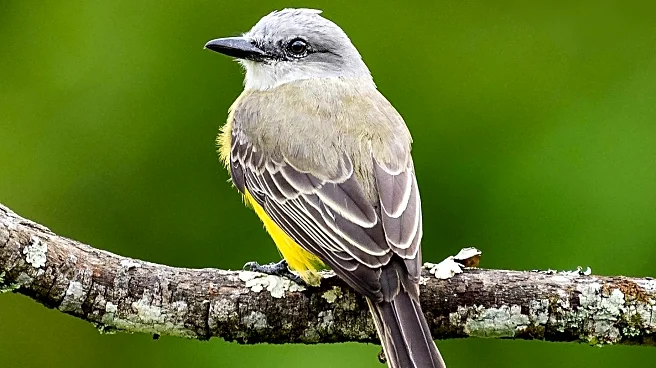What's Happening?
A recent study has explored how short photoperiods affect the brain metabolism and cold resistance of Drosophila melanogaster, commonly known as fruit flies. The research found that flies exposed to shorter daylight periods exhibited increased cold tolerance and altered brain lipid levels. Specifically, these flies showed higher levels of triacylglycerols and structural lipids in their brains, which are associated with energy storage and membrane structure. The study also noted that short-day flies consumed more food and had a higher survival rate in cold conditions compared to long-day flies. These findings suggest that the flies adapt their metabolism to prepare for colder environments by altering their lipid profiles and energy metabolism.
Why It's Important?
This research provides insights into how environmental factors like daylight duration can influence metabolic processes and survival strategies in organisms. Understanding these mechanisms in Drosophila melanogaster can offer broader implications for studying metabolic and neurodegenerative diseases in humans, as similar metabolic pathways are involved. The findings could also contribute to agricultural and ecological strategies, as they highlight how organisms adapt to changing climates. This knowledge is crucial for predicting how species might respond to global climate changes and for developing interventions to support biodiversity and ecosystem stability.
What's Next?
Future research may focus on exploring the genetic and molecular pathways that mediate these metabolic changes in response to photoperiods. Additionally, studies could investigate whether similar adaptations occur in other species and how these findings can be applied to improve cold resistance in crops or other economically important organisms. There is also potential for exploring the implications of these findings in the context of climate change, particularly how species might adapt to shifting environmental conditions.
Beyond the Headlines
The study highlights the complex interplay between environmental cues and biological processes, emphasizing the role of photoperiods in regulating metabolic and physiological adaptations. This research could lead to a deeper understanding of how organisms maintain homeostasis and adapt to environmental stressors, which is critical for developing strategies to mitigate the impacts of climate change on biodiversity.










